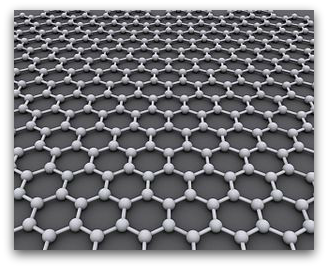
Image: AlexanderAIUS
Graphene is at it again, outperforming all known materials (including superconductors) in a recent study testing the transmission of high frequency electrical signals.
The researchers found that when the electrical signals pass through graphene, none of the energy is lost – opening the door to a new realm of electrical transmission.
This from the University of Plymouth:
And since graphene lacks band-gap, which allows electrical signals to be switched on and off using silicon in digital electronics, academics say it seems most applicable for applications ranging from next generation high-speed transistors and amplifiers for mobile phones and satellite communications to ultra-sensitive biological sensors.
“An accurate understanding of the electromagnetic properties of graphene over a broad range of frequencies (from direct current to over 10 GHz) has been an important quest for several groups around the world,” said Shakil Awan, leader of the study. “Initial measurements gave conflicting results with theory because graphene’s intrinsic properties are often masked by much larger interfering signals from the supporting substrate, metallic contacts and measurement probes. Our results for the first time not only confirm the theoretical properties of graphene but also open up many new applications of the material in high-speed electronics and bio-sensing.”
The researchers hope their study could additionally result in the development of high-speed and efficient low noise amplifiers, mixers, radiation detectors, and novel biosensors.
“Graphene devices for next generation wireless technologies (up to and beyond 10 GHz) are progressing fast,” said Alan Colli, representative of Nokia Technologies. “Our study has unlocked the fundamental behavior of graphene at high frequencies, which will be essential in the design and evaluation of future graphene-based wireless devices. This has only been made possible because of the multi-discipline expertise of the different groups based at Nokia, and in Plymouth, Cambridge and Tohoku universities.”

